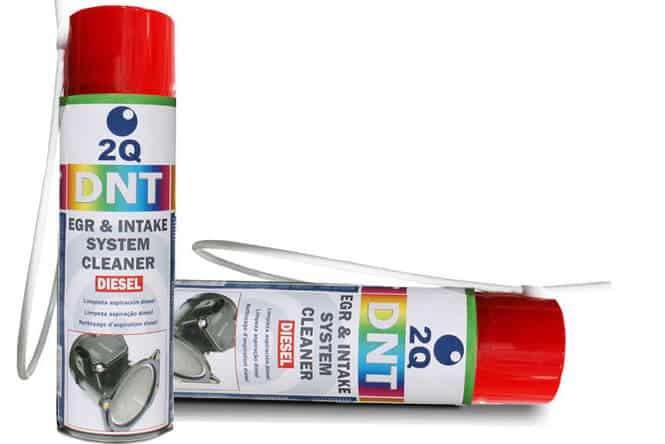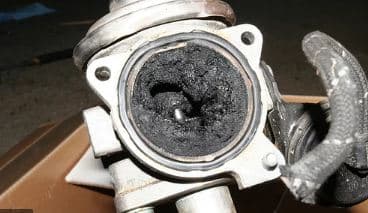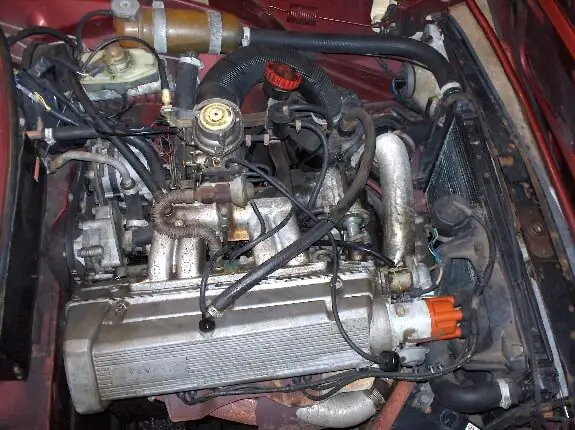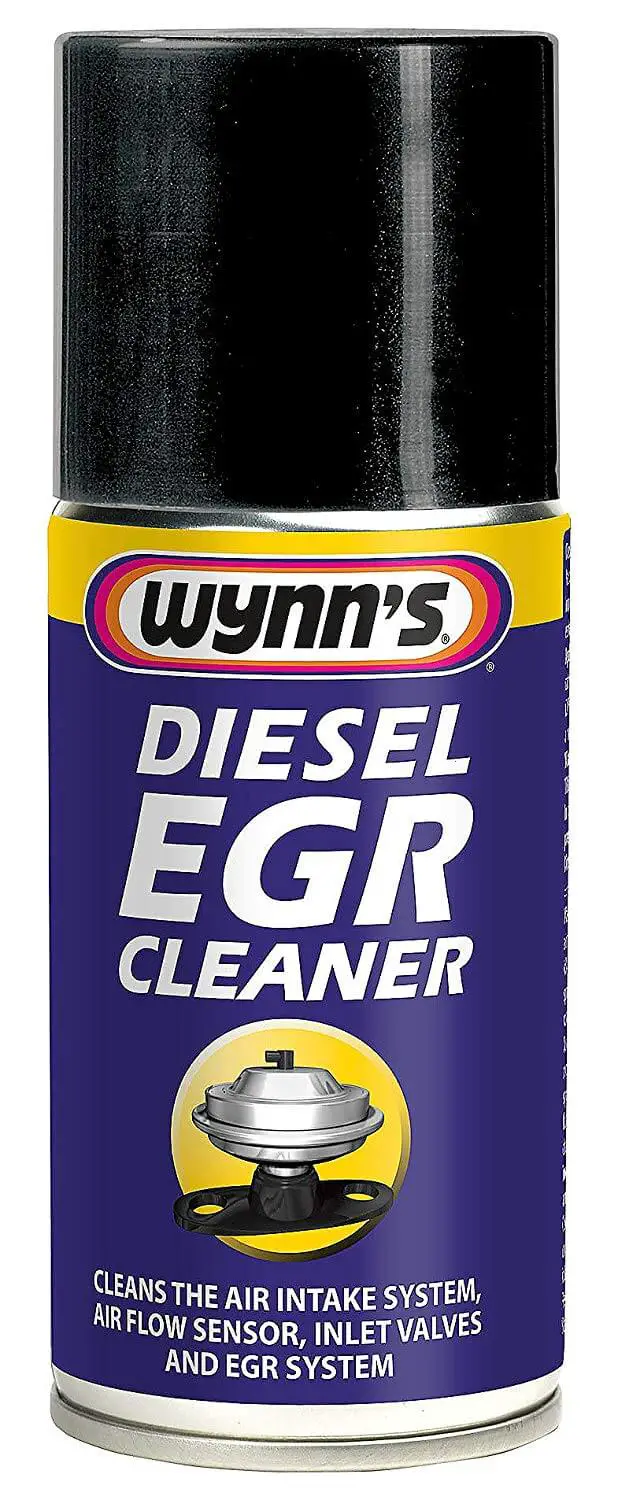
Table of Contents
Intro
You will find an EGR system in most modern cars, with both gasoline or diesel engines. This is an emission control system that returns the portion of exhaust gases into the engine intake, and it is controlled by an EGR valve. Because the exhaust gases are full of soot and other particles, EGR can get clogged with time. This blocks of the exhaust flow. Diesel-powered cars are more prone to this. In addition, carbon deposits can cause EGR valve to get stuck in either open or closed position. This can lead to several problems and so the EGR needs to be cleaned in such instances. Below we explore the best EGR cleaners on the market.
Best EGR Cleaner On The Market
Here are a several very good EGR cleaners that are recommended for this job:
This is an aerosol product is especially developed for cleaning the air intake system of all diesel engines.
- provides immediate thorough cleaning of air intake system
- strong power jet spray to support cleaning action
- dissolves gum, lacquer, tar, carbon and deposits
- restores perfect airflow towards the combustion chamber
- provides a regular and stable idle
- eliminates starting problems
This is a special active solvent with a high-tech additive combination for removing typical contamination and deposits in the intake system, including an EGR valve.
- removes greasy deposits and dirt such as oil, soot, etc.
- guarantees the functional performance of the moving parts and
- reduces fuel consumption.
- increases the reliability of diesel-powered engines
This is a professional product formulated to quickly remove deposits caused by exhaust gases in diesel engines. Performance and power are restored and emissions reduced.
- Reduces emissions
- Restores performance
- Powerful solvent formula
- 360° spray action allows it to spray in all directions
How To Use EGR Cleaner Sprays?
Start the engine and let it reach operating temperature before you start with cleaning. After warming up, turn the engine off, and remove intake hoses to gain direct access to the intake manifold. If your car has a MAF sensor, you will have to disconnect it. Turn on the engine and run it at approximately 2000 RPM. Using a probe, spray in a short 1-2 second burst into the intake manifold. Observe the engine speed increase. For fluctuation of more than 1000 RPM, shorten the spray intervals.
Make sure that the EGR Cleaner does not come into contact with the airflow meter or painted components. In the case of stubborn carbon deposits in the intake manifold, cleaning can be repeated with a second can. After use, allow the engine to run for about 20 seconds at 2000 RPM in order to burn any residues remaining in the intake system.
Problems Resulting From A Blocked EGR
A blocked EGR can easily block the device. If an EGR valve is stuck in an opened position, exhaust gases will uncontrollably enter the intake. This can cause the following symptoms:
- The engine will run very rough until it warms up
- Stalling and rough running while idling when it warms up
- Strong fuel smell when the engine is running
- Increased fuel consumption
With an EGR valve clogged or stuck in a closed position, there will be no exhaust flow into the intake. This will cause a higher combustion temperature, so you might experience some of the following:
- Pinging noise from the engine when accelerating at low engine speeds
- Strong detonations caused by excessive heat
In both cases, you will probably have a ‘check engine’ light that stays on. In addition, it is most likely that your car will fail emission tests due to the high level of hydrocarbons (HC) or nitrogen oxides (NOx).

Problems Resulting From A Blocked EGR
Luckily, there are various EGR cleaners that you can use to fix a clogged or a jammed EGR valve. When the carbon build-up is not too stubborn, this can even be done without removing the EGR valve. So, if you suspect that an EGR valve on your car is clogged, get it cleaned as soon as possible. You can even do this as a preventive measure. In this article, we dig deep into the best EGR cleaner on the market.
A bit of theory in the end – What is EGR and how does it work?
EGR stand for exhaust gasoline recirculation or, as some would say, engine gasoline return. As the name would suggest, this system allows a certain portion of exhaust gases to get back into the engine intake.

During combustion, temperatures can reach up to 1400 degrees. Such high temperatures burn the usually inert gas nitrogen, creating nitrogen oxides (NOx). These harmful gases cause air pollution and human health problems. Introducing exhaust gases into lowers the peak combustion temperatures. This reduces the emission of nitrogen oxides. EGR system is used in both gasoline and diesel engines. In gasoline engines, up to 20 percent of exhaust gases can be returned. In diesel engines, this amount can go as high as 60 percent.
The EGR is a fairly simple system. It consists of tubing that connects the exhaust with the intake, and an EGR valve that regulates the amount of exhaust gases. This process is controlled by the engine control unit. It depends on the engine speed, load, and temperature. In general, EGR is activated only when coasting or under low engine loads. Exhaust gases have a negative impact on combustion when the engine is started from cold while idling or under hard accelerations. So this is essential that the exhaust flow is closed in that operating conditions.
On such a simple system, EGR valve is practically the only failure point. It can suffer various internal breakdowns, depending on the type. There are vacuum, back-pressure, electro-vacuum or digitally controlled EGR valves. But, in most cases, the failure will be caused by a carbon build-up within the EGR valve.
Common causes for EGR valve carbon build-up are
- frequent short drives
- excessive oil level
- excessive oil consumption
- blocked crankcase ventilation system
- faulty turbocharger
- irregular oil changes
- using inadequate engine oil
- worn out engine
Final words
If anything of the aforementioned applies to your car or your driving habits, it is strongly recommended that you check and clean the EGR valve. You can try one of the best EGR cleaners that we reviewed in this article. Good luck!
 by
by 

